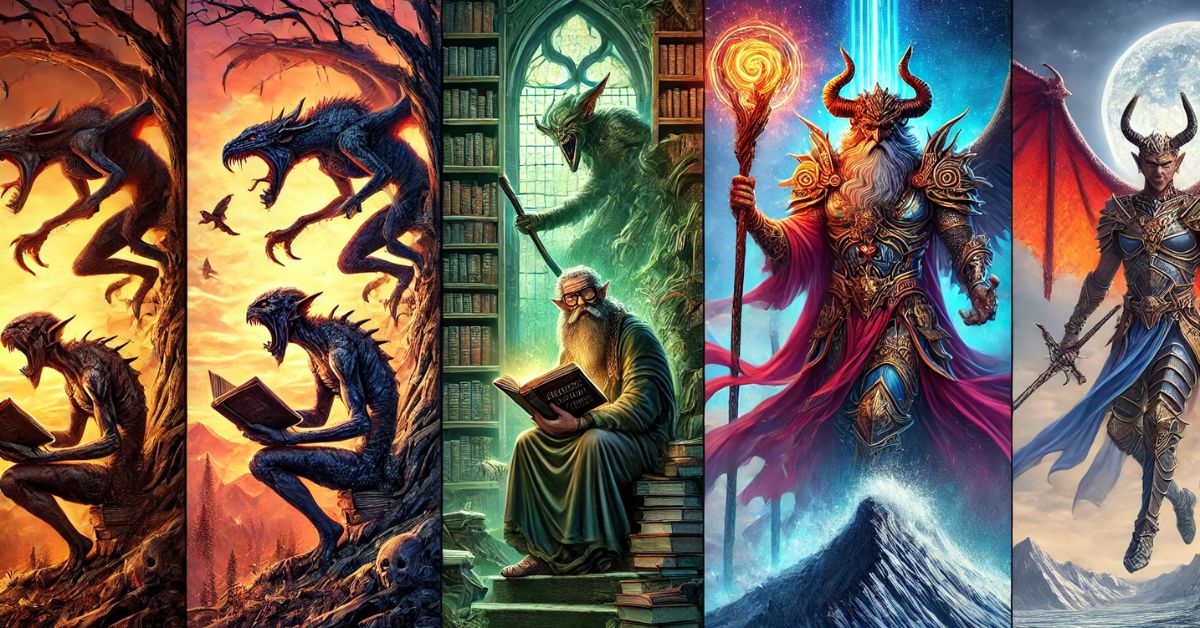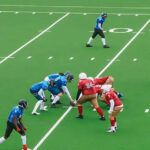The evolution of the goblin as a mythical creature is one of the most fascinating arcs in folklore and modern storytelling. From their humble beginnings as mischievous tricksters in medieval Europe to their rise as powerful figures in contemporary fantasy settings, goblins have captured imaginations across cultures. This article explores their journey, detailing how goblins transitioned from small, often comical characters to entities imbued with divine status—the “Goblin God.” We’ll explore their origins, cultural significance, literary appearances, and how they have been reimagined in modern media.
Origins of Goblins
Goblins originated in European folklore, with references dating back to the Middle Ages. The term “goblin” is believed to derive from the Greek word kobalos, meaning “roguish” or “mischievous.” Early depictions described goblins as small, grotesque, humanoid creatures known for causing trouble, playing pranks, or stealing from humans. They were often associated with the supernatural and were thought to inhabit caves, forests, or even households, much like house spirits.
Characteristics in Early Folklore
In their earliest iterations, goblins were ambiguous figures. Some tales depicted them as malevolent, delighting in chaos and fear, while others presented them as helpful but mischievous beings. Notable characteristics included:
- Small stature.
- A penchant for mischief or malice.
- Association with nature or underground habitats.
- Trickster qualities.
Cultural variations added layers to their mythos. For example, in French folklore, goblins were akin to household spirits, while in Germanic traditions, they resembled the cunning kobolds who haunted mines.
Goblins in Literature and Mythology
The literary portrayal of goblins began to cement their identity in the public imagination. Early references in works such as Geoffrey Chaucer’s The Canterbury Tales labeled goblins as devilish creatures. However, their roles diversified as they appeared in children’s stories, Gothic literature, and Victorian fairy tales.
Early Literary Depictions
- “Goblin Market” by Christina Rossetti (1862): In this iconic poem, goblins are merchants offering luscious, enchanted fruit. They symbolize temptation and corruption, adding a moral dimension to their lore.
- Fairy Tales: In Grimm’s fairy tales, goblin-like creatures often appeared as antagonists or ambiguous helpers.
- Tolkien’s Goblins: J.R.R. Tolkien introduced goblins to modern fantasy in The Hobbit and The Lord of the Rings. Here, goblins (or orcs) were brutish and malevolent, representing a militarized, organized evil.
The Rise of Goblins in Modern Fantasy
The 20th century marked a turning point for goblins. Fantasy literature, role-playing games (RPGs), and video games redefined their roles, often granting them depth, individuality, and complex societies.
Goblins in Role-Playing Games
The introduction of goblins in Dungeons & Dragons (D&D) transformed their cultural significance. In early editions, goblins were low-level enemies, often encountered by beginner adventurers. Over time, however, their societal structures, religions, and personalities became more nuanced.
- Hierarchy: Goblins in D&D are often depicted as members of tribal societies, following rigid hierarchies.
- Deities: Goblin gods, such as Maglubiyet, elevated their status within the lore. These divine figures imbued goblins with purpose, leading them into wars or inspiring loyalty.
Goblins in Video Games
Games like World of Warcraft, The Elder Scrolls, and Magic: The Gathering offered further interpretations of goblins:
- Technological Savvy: In World of Warcraft, goblins are portrayed as ingenious engineers and merchants.
- Comic Relief: In many franchises, goblins maintain their mischievous humor, balancing darker themes with levity.
The Transition to Goblin Gods
The concept of a “Goblin God” symbolizes the ultimate evolution of goblins in storytelling. This shift occurred as creators sought to explore the mythos of goblins in greater depth, granting them divine status within their fictional universes.
Divine Goblins in Mythology and Fantasy
- Maglubiyet (Dungeons & Dragons): One of the most iconic goblin gods, Maglubiyet is depicted as a warlike deity who demands subservience and thrives on conquest. His existence transforms goblins from mere tricksters to devoted followers of a higher power.
- Other Deities: Variations in goblin lore have led to the introduction of other gods, such as Khurgorbaeyag (the goblin god of slavery and oppression) and Bargrivyek (the god of cooperation and peace among goblin-kind).
Symbolism of the Goblin God
The rise of goblin gods often reflects broader themes in storytelling:
- Cultural Development: The shift represents a maturation of goblin societies, evolving from scattered groups to organized civilizations.
- Exploration of Faith: Goblin gods allow creators to explore themes of religion, loyalty, and the complexities of worship.
- Power Dynamics: By introducing deities, storytellers can delve into the relationships between mortals and gods, particularly within hierarchical or tribal structures.
Goblins in Popular Media
Modern media has continued to innovate goblin lore, often blending humor, darkness, and complexity.
Films and TV
- The Goblin King (Labyrinth): David Bowie’s portrayal of the Goblin King in Labyrinth (1986) added a new dimension to goblin mythology. The character combines charm, menace, and mysticism.
- Anime and Manga: Series like That Time I Got Reincarnated as a Slime depict goblins evolving into powerful allies, challenging traditional stereotypes.
Literature and Graphic Novels
- Terry Pratchett’s Discworld: Goblins in Pratchett’s world are depicted sympathetically, emphasizing their cultural and societal struggles.
- Comics: Goblins often appear as both villains and antiheroes, reflecting their dual nature.
Games and Virtual Worlds
- World of Warcraft: Goblins in WoW showcase a blend of capitalist ambition and engineering prowess.
- Indie Games: Titles like Goblins of Elderstone allow players to build and manage goblin societies, emphasizing their adaptability.
The Cultural Significance of Goblins
Goblins represent more than just fantasy creatures; they embody aspects of human nature, societal fears, and the duality of chaos and order. As tricksters, they challenge norms. As soldiers, they reflect our fears of war and domination. And as gods, they symbolize ambition and transcendence.
The Duality of Goblins
The goblin’s journey from rogue to deity mirrors human struggles:
- Chaos vs. Order: Goblins thrive in chaos but often seek structure through hierarchy or faith.
- Mischief vs. Power: From pranksters to rulers, goblins embody the tension between playfulness and authority.
- Fear vs. Respect: Initially feared, goblins’ rise to godhood demands respect, highlighting the transformative power of storytelling.
Conclusion
The transformation of goblins from mischievous creatures to divine beings reflects the evolving nature of mythology and storytelling. These small, often overlooked figures have grown into powerful symbols of adaptability, resilience, and the human fascination with the unknown. As goblins continue to evolve in popular culture, their journey from humble origins to godhood serves as a testament to the power of reinvention.
FAQs
1. What is the origin of goblins in folklore?
Goblins originated in European folklore, particularly during the Middle Ages. They were often depicted as mischievous or malevolent spirits inhabiting forests, caves, or households.
2. How did goblins evolve in literature?
Early literature portrayed goblins as mischievous tricksters or minor antagonists. Over time, works like Tolkien’s The Hobbit and Dungeons & Dragons gave them depth, depicting them as complex societies with distinct cultures.
3. What is a goblin god?
A goblin god is a divine entity worshipped by goblins in fictional universes. These deities, like Maglubiyet in Dungeons & Dragons, often symbolize power, war, or societal hierarchy.
4. How are goblins portrayed in modern media?
Modern media depicts goblins in diverse roles, from comic relief characters to technological geniuses and even sympathetic figures. They appear in films, video games, and literature.
5. Why are goblins significant in storytelling?
Goblins represent chaos, mischief, and adaptability. Their transformation from tricksters to gods mirrors themes of growth, resilience, and the complexities of human nature.
6. What are some famous goblins in popular culture?
Famous goblins include the Goblin King from Labyrinth, the goblins in Tolkien’s works, and the resourceful goblins of World of Warcraft. Each depiction adds to the richness of goblin lore.











